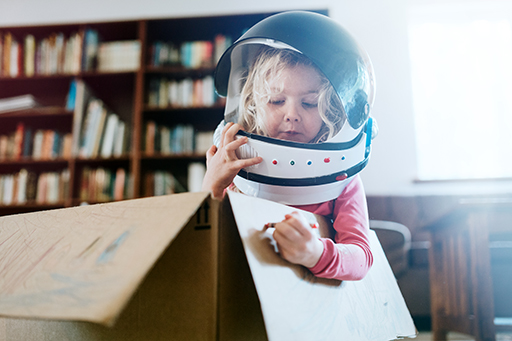2.4 The role of imagination
Children often express their imagination through play. While this in itself is an important opportunity for creative expression, more importantly ‘pretend play in childhood is where many of the cognitive and affective processes important in creativity occur’ (Russ, 2014, cited in Kaufman and Gregoire, 2015, p. 8).

As adults it is easy to be drawn away to the world of being serious and attending to more ‘grown-up matters’. Even when you do access your imagination it can often be through the lens of someone else’s thought as you read a book, or watch a film or television programme. Yet for adults, imagination is arguably important for ‘even the most minimally creative thought’ (Stokes, 2017, p. 158).
Activity 3 Creativity and imagination
Watch this video clip discussing the importance of imagination as a source of creativity. As you are watching, reflect on the way you access your imagination on a daily basis

Transcript
Discussion
As Scott Barry Kaufman suggests, imagination and a ‘messy mind’ are key to creativity. Allowing yourself to access your imagination might just help enhance your creativity. For example, doing so might allow you to imagine new ways of addressing challenges or solving problems. Taking a ‘child-like’ perspective and letting your imagination run free could help you combine different approaches or look beyond the obvious, much in the same way you might if you were mapping different scenarios for a project.
Think of the early days of space exploration: as no-one had actually been on the moon, the scientists who developed spacecraft and other equipment for early missions had no choice but to build upon their scant scientific observations to imagine the potential challenges that might be encountered.
In the next section you will take a look at some steps you can take to enhance your personal creativity.
